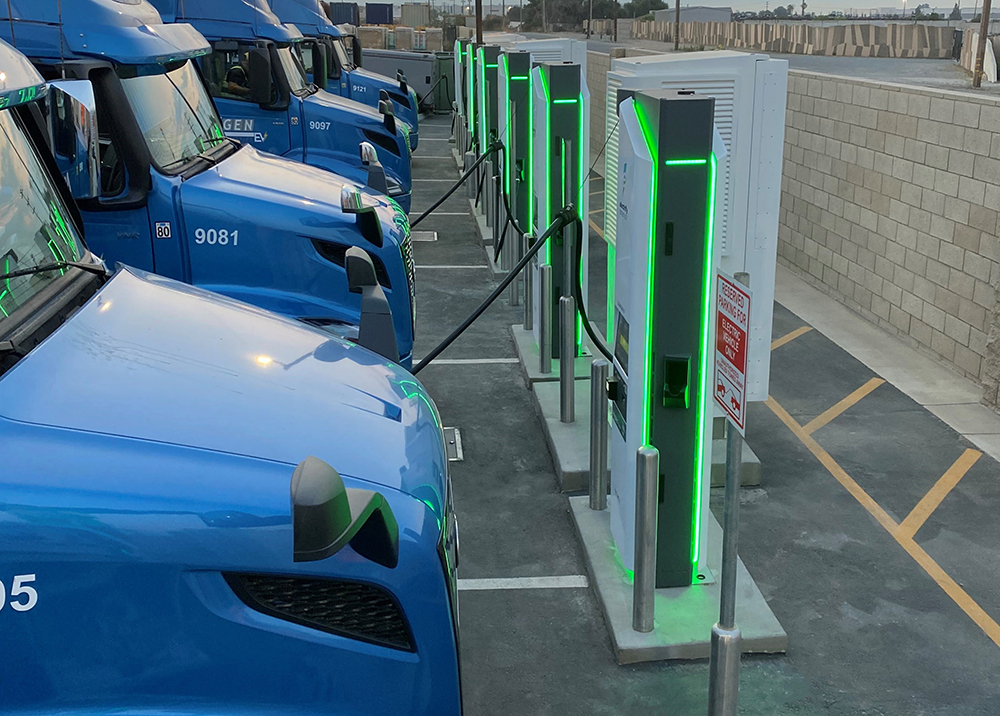Spitballing here, the transition to Electric Transport Trucks and associated charging infrastructure could introduce more slack in an industry where speed is usually top priority.
At an intermodal facility, often time is wasted waiting to load/unload, which could be spent to recharge. For local distribution, charging at home base seems feasible and efficient. For long hauls, where hours of service, tiredness management is concerned, with adequate spacing of charging infrastructure, trucks can be charged during rest breaks.
As of right now, long haul Class 8 is really not very feasible for BEV. The range is low enough that you don’t get a full driving shift out of it, and that’s really how long haul vehicles move. I think once we reach that point, though, the 30 minutes per 8 driving hours break (in the US) might be a bit too low to achieve a full 10 or 11 hour driving time day. But the minimum rest time after 10 or 11 driving hours is 8-10 hours which is much more time than would be required to charge on even a 150kW DCFC.
I think we’re getting closer to Class 8 being feasible, but it’s probably 5 years off or so still. Good to get the infrastructure in place now rather than having it lagging behind when these trucks start showing up in higher numbers.
https://www.fmcsa.dot.gov/regulations/hours-service/summary-hours-service-regulations
I’m a bit surprised they’re deploying 350kW chargers for Class 8 vehicles rather than MCS chargers. Though I’m guessing there’s an attempt to strike a balance between easily available utilities services, driving segment length, driving shift length, and charger speed. But when MCS chargers start getting deployed, Class 8 vehicles become much more reasonable.




